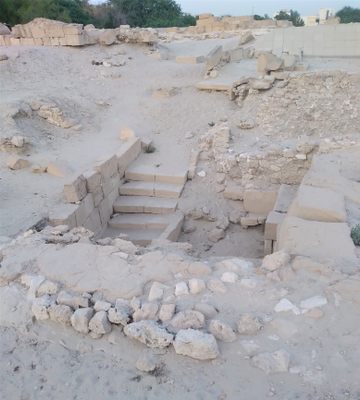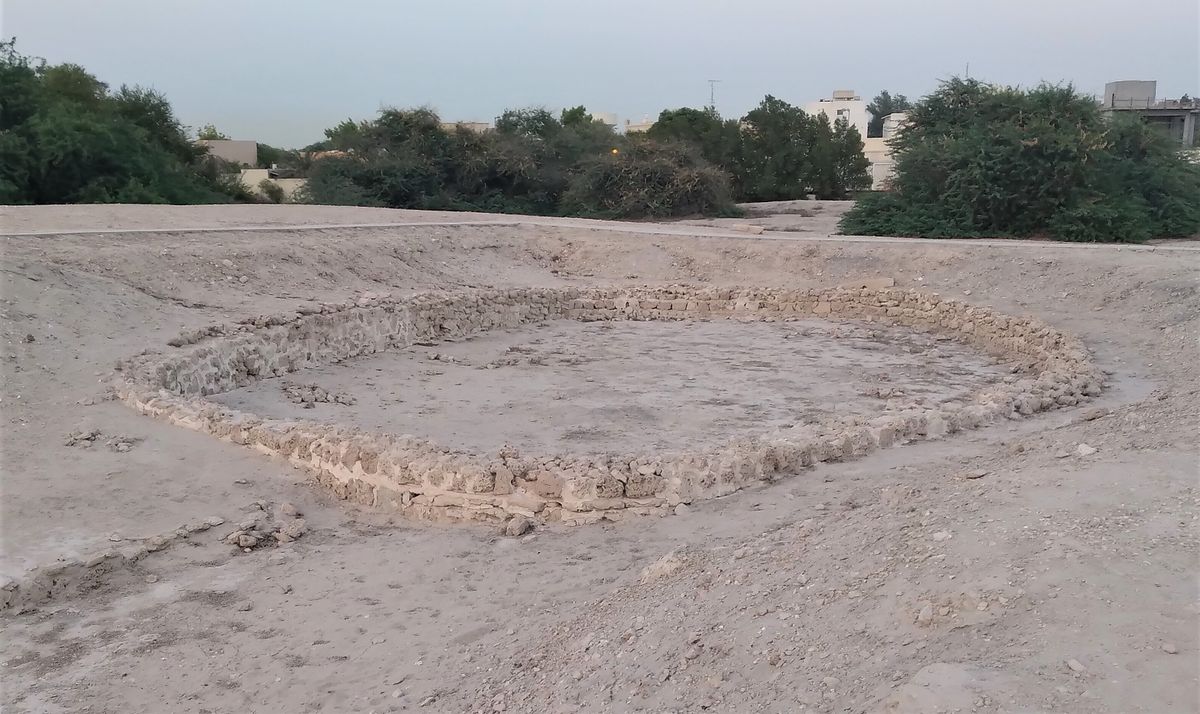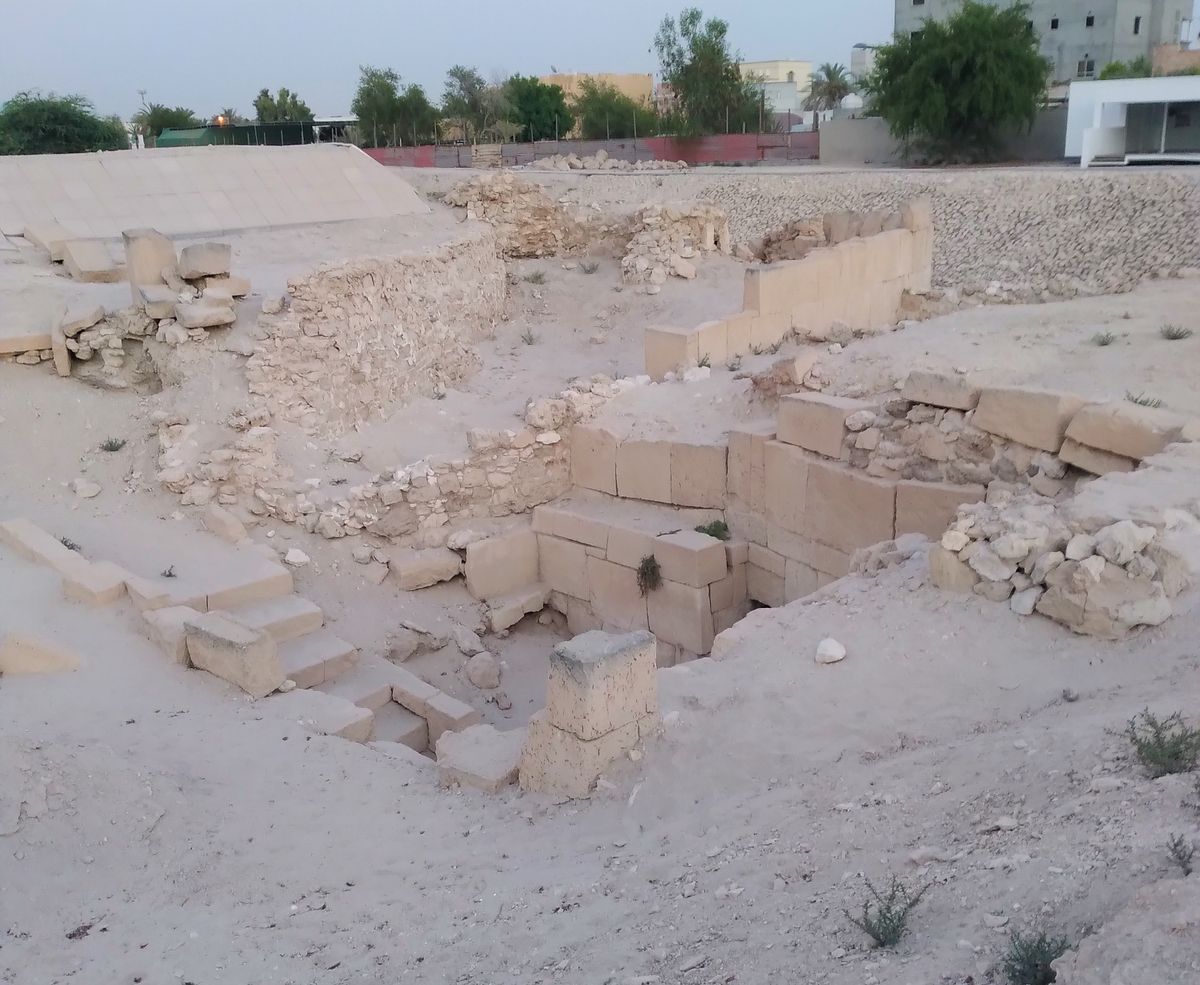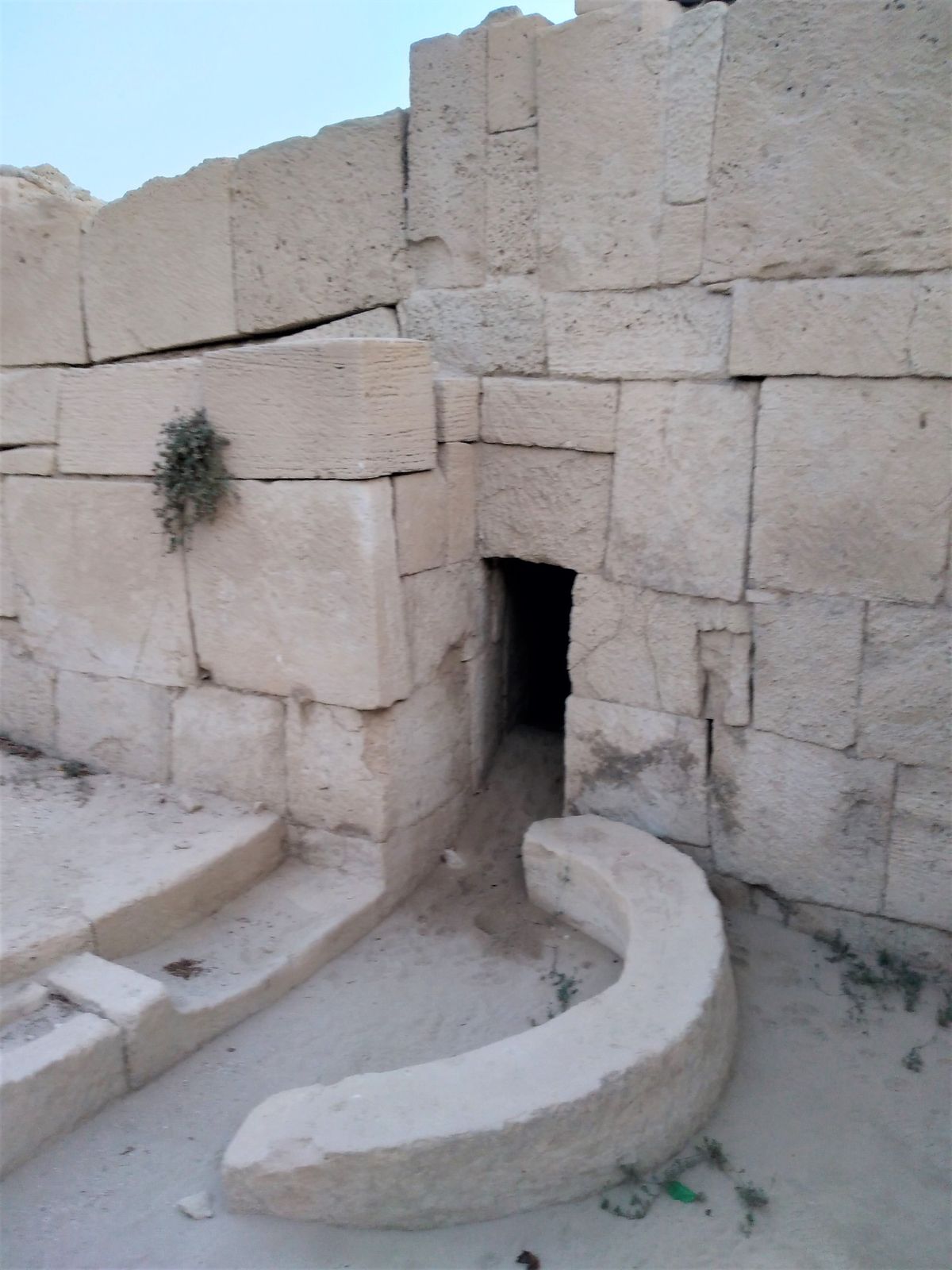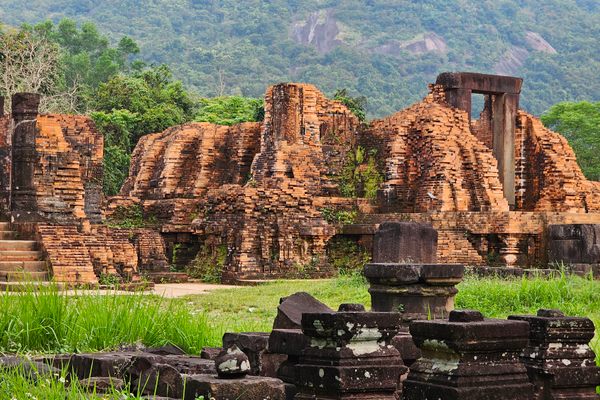About
Despite the historical significance of this site, it has very few visitors, and is secured by a single guard who is very happy to tell you all he knows of the site.
The Barbar Temple is actually three Dilmun temples, built on top of each other, starting in the third millennium B.C. (For context, the Egyptian Pyramids at Giza started construction in the middle of the second millennium B.C.). Temple 2 was built approximately 500 years after Temple 1, and Temple 3 was built in approximately 2100-2000 B.C.
From a central terrace, a stairway leads to a shrine for water cult ceremonies; the spring of sweet water filled the pool at least through the 1950s, as you can see in photos in the small museum on site. This spring was likely a reason for the location of the shrine.
Originally uncovered and excavated by Danish archaeologists Glob, Andersen, and Mortensen in the 1950s, most of the finds—which include a copper bull's head, tools, weapons, and pottery—are on display in the Bahrain National Museum.
Approximately four millenia ago, a poem written in cuneiform on a clay tablet in ancient Sumer described Dilmun: The Land of Dilmun is holy, / The Land of Dilmun is pure. / In Dilmun no cry the raven utters, nor does the bird of ill-omen foretell calamity. / The lion kills not, / Nor does the ravening wolf snatch away the defenseless lamb. / Unknown is the wild dog who tears the kid. / The dove does not conceal its head. / No one here says "my eyes are sick." No one here says "my head is sick." No one here says "I am an old woman." No one here says "I am an old man." The maiden walks here in innocence. No lustrations need to be poured. / The somber death priest walks not here. By Dilmun's walls he has no cause for lamentations.
Could the basis of this Sumerian poem be why Gilgamesh, hero of the earliest surviving notable literature in human history, possibly actually ruling the Sumerian city of Uruk sometime between 2900-2350, traveled to Dilmun to seek immortality? As Bahrain is only approximately 15 miles by 30 miles, the majority of Dilmun ruins are in the northern governorate, and the capital of the Dilmun civilization was likely housed at the Qala'a Bahrain (Bahrain Fort) nearby to the temple. If Gilgamesh did travel to Dilmun, he probably walked the same ground you will at this temple site.
Related Tags
Know Before You Go
Note that Google Maps and Waze will send you past the parking lot and you may have to turn around.
Published
October 12, 2021









